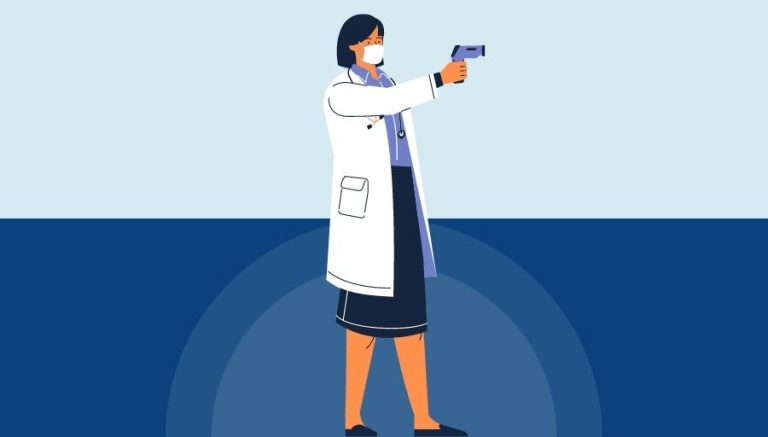How To Use CPT Code 76641
CPT 76641 is a code used for a complete ultrasound of one breast, including axilla when performed. This article will cover the description, procedure, qualifying circumstances, when to use the code, documentation requirements, billing guidelines, historical information, similar codes, and examples of CPT 76641 procedures.
1. What is CPT 76641?
CPT 76641 is a medical billing code used to describe a complete ultrasound of one breast, including the axilla when performed. This code is used by medical coders and billers to accurately document and bill for this specific diagnostic procedure.
2. 76641 CPT code description
The official description of CPT code 76641 is: “Ultrasound, breast, unilateral, real time with image documentation, including axilla when performed; complete.”
3. Procedure
The CPT 76641 procedure involves the following steps:
- The patient is appropriately prepped for the ultrasound.
- The provider places a transducer probe on the affected breast.
- The probe generates sound waves that travel through tissues of different density.
- As the sound waves strike various tissues in the breast, they reflect back, and the provider receives images on the monitor.
- The provider images each breast quadrant and the central area behind the nipple and areola for a complete ultrasound.
- The procedure might involve ultrasound of the axilla along with the breast.
- Image documentation is recorded for the procedure.
4. Qualifying circumstances
Patients who are eligible to receive CPT 76641 services include those with the following circumstances:
- Presence of a palpable breast mass or lump
- Abnormal findings on a mammogram
- History of breast cancer or high risk for breast cancer
- Presence of breast implants
- Monitoring of a previously diagnosed breast condition
- Assessment of breast pain or nipple discharge
- Guidance for a breast biopsy or other interventional procedure
5. When to use CPT code 76641
It is appropriate to bill the 76641 CPT code when a provider performs a complete ultrasound of one breast, including the axilla when performed. This code should be used for diagnostic purposes and to guide treatment decisions based on the ultrasound findings.
6. Documentation requirements
To support a claim for CPT 76641, the following information should be documented:
- Patient’s medical history and reason for the ultrasound
- Physical examination findings related to the breast
- Details of the ultrasound procedure, including the equipment used and the specific areas of the breast examined
- Findings and impressions from the ultrasound images
- Any additional procedures or interventions performed during the ultrasound
- Provider’s recommendations for further evaluation or treatment based on the ultrasound findings
7. Billing guidelines
When billing for CPT code 76641, keep in mind the following guidelines:
- Use code 76641 for a complete ultrasound of one breast, including axilla when performed.
- If a limited ultrasound of one breast is performed, use code 76642.
- Append professional component modifier 26 to the radiology code when reporting only the physician’s interpretation for the radiology service.
- Append modifier TC to the radiology code when reporting only the technical component for the radiology service. Note that payer policy may exempt hospitals from appending modifier TC because the hospital’s portion is inherently technical.
- Do not append a professional or technical modifier to the radiology code when reporting a global service in which one provider renders both the professional and technical components.
8. Historical information
CPT 76641 was added to the Current Procedural Terminology system on January 1, 2015. There have been no updates to the code since its addition.
9. Similar codes to CPT 76641
Five similar codes to CPT 76641 and how they differentiate are:
- CPT 76642: This code is used for a limited ultrasound of one breast, including axilla when performed, as opposed to a complete ultrasound.
- CPT 76645: This code is used for a bilateral breast ultrasound, covering both breasts, as opposed to a unilateral breast ultrasound.
- CPT 76380: This code is used for a follow-up or limited computed tomography (CT) study, which is a different imaging modality than ultrasound.
- CPT 77065: This code is used for a diagnostic mammography, including tomosynthesis, which is a different imaging modality than ultrasound.
- CPT 77031: This code is used for a stereotactic localization guidance for breast biopsy or localization device placement, which is a more specific procedure than a general breast ultrasound.
10. Examples
Here are 10 detailed examples of CPT code 76641 procedures:
- A 45-year-old female with a palpable lump in her left breast undergoes a complete ultrasound of the left breast, including axilla.
- A 55-year-old female with a history of breast cancer has a complete ultrasound of her right breast, including axilla, for routine monitoring.
- A 35-year-old female with breast implants undergoes a complete ultrasound of her right breast, including axilla, due to breast pain.
- A 50-year-old female with an abnormal finding on her mammogram undergoes a complete ultrasound of her left breast, including axilla, for further evaluation.
- A 40-year-old female with nipple discharge has a complete ultrasound of her right breast, including axilla, to assess for any underlying abnormalities.
- A 60-year-old female with a family history of breast cancer undergoes a complete ultrasound of her left breast, including axilla, as part of her high-risk screening protocol.
- A 48-year-old female with a previously diagnosed breast cyst has a complete ultrasound of her right breast, including axilla, to monitor the cyst’s size and appearance.
- A 52-year-old female with a palpable mass in her left breast undergoes a complete ultrasound of the left breast, including axilla, to guide a fine needle aspiration biopsy.
- A 38-year-old female with breast pain and a history of fibrocystic breast changes has a complete ultrasound of her right breast, including axilla, to evaluate for any new or concerning findings.
- A 47-year-old female with a suspicious finding on her mammogram undergoes a complete ultrasound of her left breast, including axilla, to further characterize the finding and guide treatment decisions.



